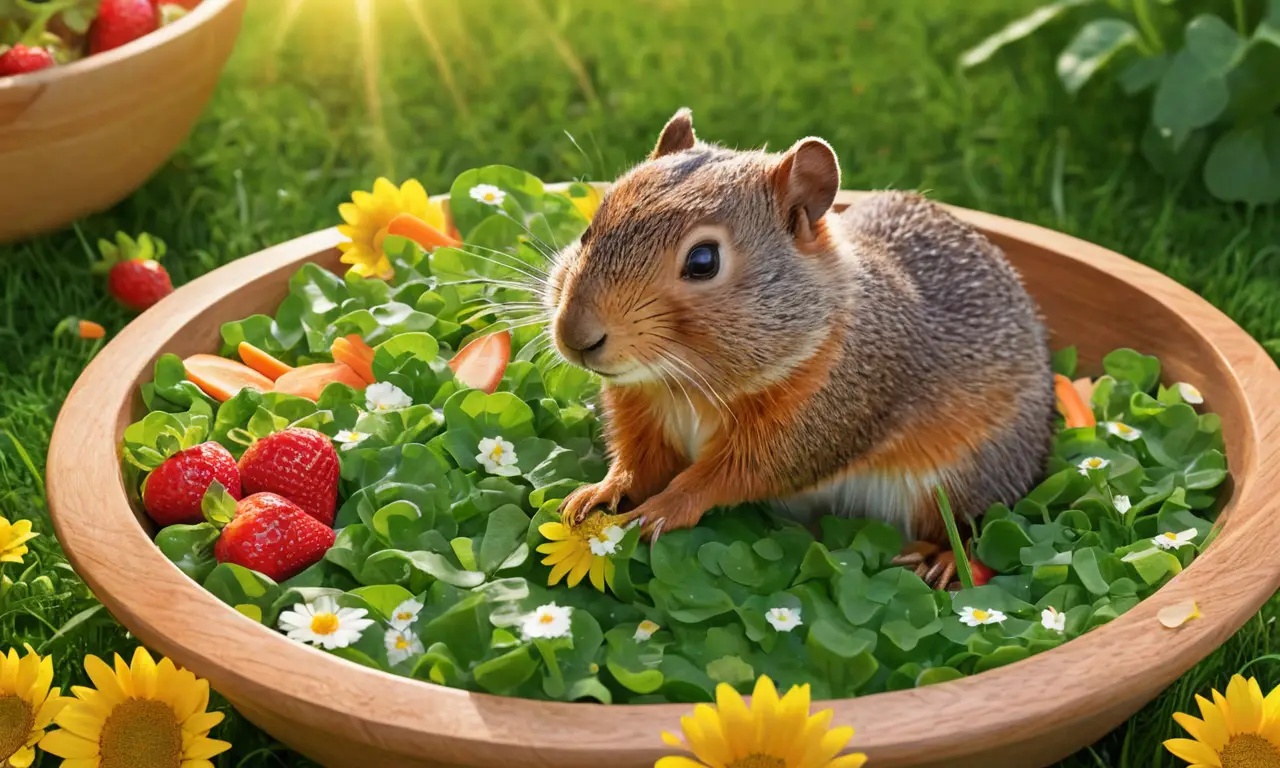
Groundhogs, those charming burrow dwellers often associated with predicting the arrival of spring, are fascinating creatures with specific dietary needs. Understanding what constitutes a healthy diet for these herbivores is crucial for ensuring their well-being, especially if you encounter them in your backyard or local park. This article will delve into the intricacies of a groundhog’s diet, outlining both safe and harmful food options to help you make informed decisions about feeding these intriguing animals.
This comprehensive guide will explore the fundamental aspects of a groundhog’s diet, detailing the types of foods they naturally consume and those that should be avoided. We’ll also discuss practical tips for providing a balanced and nutritious diet to support their health and vitality in their natural habitat.
Groundhog Diet Basics
Groundhogs are strictly herbivores, meaning their diet consists solely of plant matter. They have evolved to thrive on a variety of vegetation, utilizing their strong teeth and digestive systems to break down tough fibers and extract essential nutrients. Their foraging habits involve grazing on grasses, clover, and other low-lying plants, supplementing their intake with fruits, vegetables, and occasionally tree bark or buds.
Understanding this natural inclination towards plant-based foods is crucial when considering what to feed them. While it’s tempting to offer treats like processed snacks or sugary delights, these items are detrimental to their health and can disrupt their digestive systems.
Safe Foods for Woodchucks

Providing groundhogs with safe and nutritious food options is essential for their well-being. Here are some examples of foods that are generally considered safe for them:
- Fruits: Apples (without seeds), berries (strawberries, blueberries, raspberries), melons (watermelon, cantaloupe) in moderation.
- Leafy Greens: Lettuce (various types), kale, spinach, dandelion greens, clover.
- Vegetables: Carrots (chopped or grated), broccoli florets, zucchini, squash.
Remember to introduce new foods gradually and observe their reactions. Some groundhogs may have individual preferences or sensitivities to certain ingredients.
Important Considerations for Safe Foods
- Freshness: Always offer fresh, clean produce. Avoid wilted or spoiled items as they can cause digestive upset.
- Quantity: Groundhogs have relatively small stomachs and should be fed in moderation. Overfeeding can lead to obesity and health problems.
- Variety: Aim for a diverse selection of safe foods to ensure they receive a balanced range of nutrients.
Harmful Foods to Avoid
While groundhogs are primarily herbivores, there are certain foods that can be harmful or even toxic to them. It’s crucial to avoid feeding them the following:
- Processed Foods: Chips, crackers, cookies, candy – these contain high amounts of sugar, salt, and artificial ingredients that are detrimental to their health.
- Dairy Products: Milk, cheese, yogurt – groundhogs lack the enzymes necessary to digest dairy properly, which can lead to digestive issues.
- Meat or Fish: Groundhogs are herbivores and cannot digest meat or fish effectively. Feeding them these items can cause serious health problems.
Additional Foods to Avoid
- Avocado: Contains persin, a toxin that is harmful to groundhogs.
- Onions and Garlic: Can damage red blood cells and lead to anemia.
- Chocolate: Contains theobromine, which is toxic to groundhogs.
Providing a Balanced Diet

Creating a balanced diet for groundhogs involves offering a variety of safe foods in appropriate quantities.
Here are some tips for achieving this:
- Fresh Produce Basket: Set up a designated area with a basket filled with fresh fruits, vegetables, and leafy greens.
- Grazing Area: If possible, provide a small patch of grass or clover where they can graze naturally.
- Water Source: Ensure a clean and accessible water source is always available.
Remember to monitor their food intake and adjust the offerings based on their preferences and activity levels.
Groundhog Nutrition Tips
Beyond providing safe and nutritious foods, there are additional tips to consider for optimal groundhog nutrition:
- Seasonal Variations: Adjust their diet based on seasonal availability of fresh produce.
- Supplements: Consult with a wildlife veterinarian about potential supplements if you have concerns about nutritional deficiencies.
- Observation: Pay attention to their eating habits and any changes in behavior that might indicate dietary issues.
Conclusion
Understanding the specific dietary needs of groundhogs is essential for ensuring their health and well-being. By providing them with a balanced diet consisting of safe and nutritious foods, you can contribute to their thriving in their natural habitat. Remember to avoid harmful substances like processed foods, dairy products, and meat, and always prioritize fresh produce and clean water sources. By following these guidelines, you can play a positive role in supporting these fascinating creatures.
